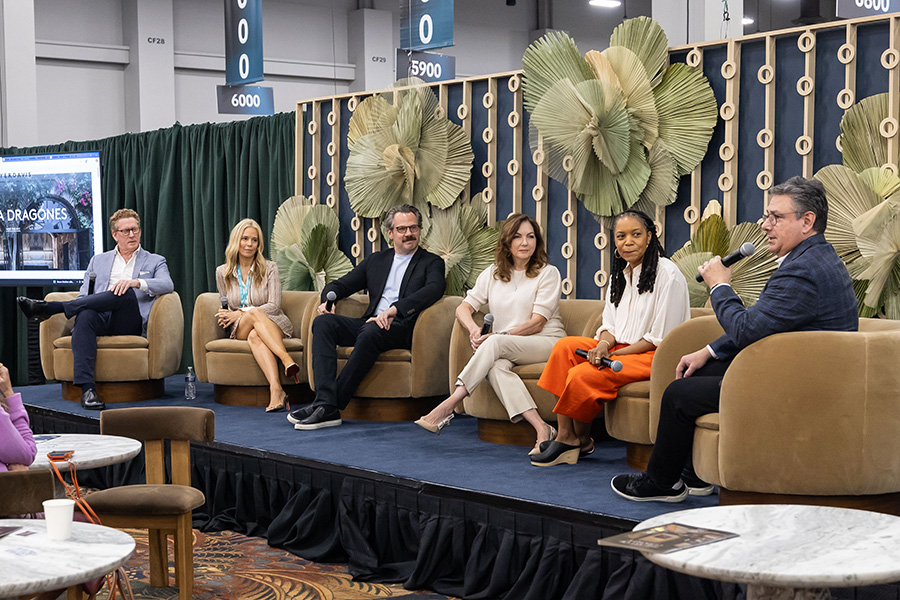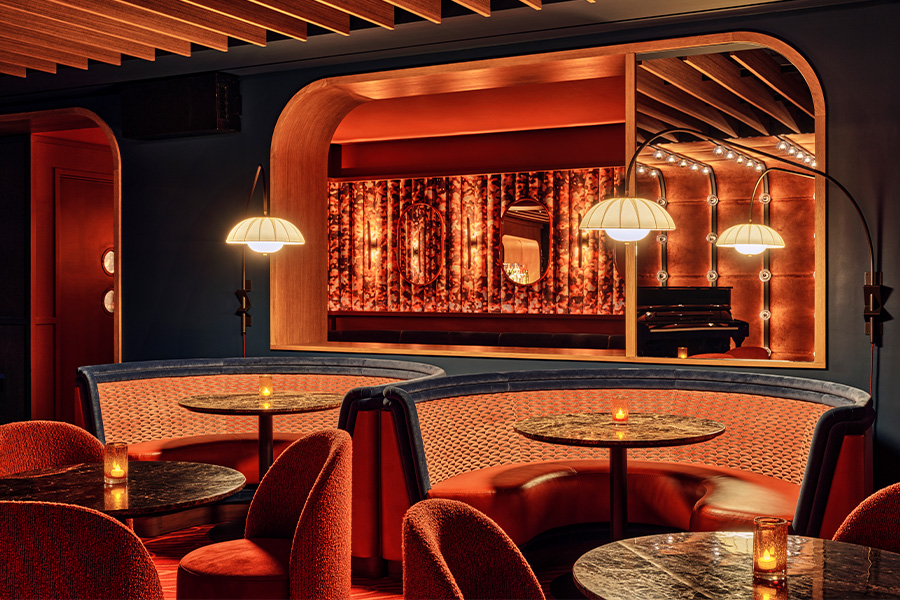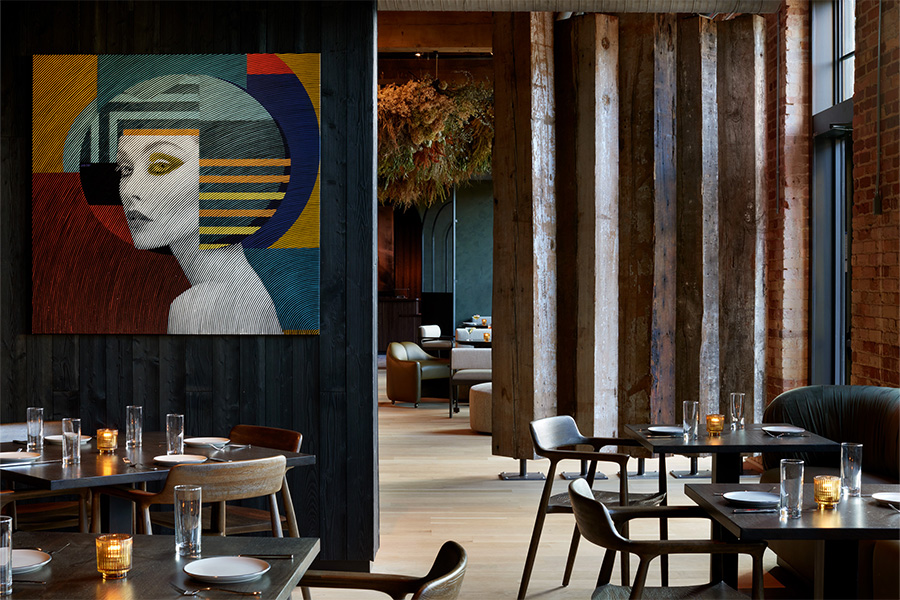In today’s unpredictable market, design firms are finding that diversification isn’t just a growth strategy—it’s a survival tactic. From launching product lines to taking strategic risks, expanding services, sectors, and team structures can help build long-term resilience while opening up new revenue streams.
During the Business Sense: Diversifying Your Firm panel at HD Expo + Conference 2025, industry leaders Gray Davis of Meyer Davis, Kellie Sirna of Studio 11 Design, Matthew Goodrich of Goodrich, Lauren Rottet of Rottet Studio, and Little Wing Lee of Studio & Projects, and Ron Swidler of the Gettys Group shared how they’re rethinking their business models to stay agile, competitive, and creatively fulfilled.
1. Expand into product design
One of the most effective ways to broaden the range of services your firm offers is by getting into product design. When Little Wing Lee started her Brooklyn, New York-based firm Studio & Projects five years ago, she “wanted to have this diversity of projects,” she says. That included launching her first lighting collection with RBW, which ultimately opened up a new income stream.
Lauren Rottet, president and founding principal of Houston-, Los Angeles-, and New York-based Rottet Studio, agrees: “Product design is a wonderful way to diversify because it’s not a service business, and it’s a bit countercyclical. When we’re not as busy [with our design work], royalties are coming in from our products; it’s a nice steady stream of income,” she says.
Matthew Goodrich, principal of his New York-based firm Goodrich, echoes this: “Part of the process is to find a universal piece and retool it so it could be produced many times in the future.”
2. Find new sectors
Working across a range of project types and price points can help maintain both creative and financial balance. For Rottet, that includes taking on low-budget motel projects with high-design aspirations. “As I get more mature in my career and life, my role is to give good design to our cities,” she says. “For very low fees, I’ve been helping certain developers make their buildings look better.”
Lee takes a similarly strategic approach: “When we’re talking about tight budgets, I also make the timelines short. We try not to spend too much time when we’re not getting paid for our time.”
3. Seek the right partners
Kellie Sirna, owner and principal of Dallas firm Studio 11 Design, shared her philosophy for vetting the right projects. An ideal one, she says, fits into three buckets: one where the design team gets to do something beautiful; where profitability is a priority; and where a good relationship with the client fosters an easy and successful partnership.
New York firm Meyer Davis often works with repeat clients, some with smaller budgets. “We always like these challenges,” says studio co-owner Gray Davis. “We turn that into a positive to create something that’s quite unique and special.”
4. Embrace strategic risk
Taking risks can lead to fresh opportunities—even if they don’t always pay off right away. “We try to challenge ourselves every year to do something that we’ve never done before,” Goodrich points out. “But it’s not a recipe for making money. Diversification is a long game that you can work in wider practice areas.”
On the other side, Davis says working across residential, hospitality, and retail has helped the firm stay active. “We found that when one area slows down, we can refocus our energies in other areas.”
5. Build a versatile team
Diversification also starts from within. Hiring talent with varied skillsets and investing in operational support helps firms stay nimble and scale sustainably.
Goodrich, for instance, has an industrial designer on staff whose contributions allow the firm to create custom and mass-market products. “His versatility helps our firm adapt to fluctuations in workload,” he says.
Sirna—who recently launched a carpet line with Tarkett and also created an art consultancy as part of her practice—emphasized the importance of trust when building her team. After restructuring Studio 11 four years ago, she became more selective about the work they accepted. “I had to be intentional about growing my firm,” she says. “We turned down work to make sure we were in a good place before going vertical again.”
As moderator Ron Swidler, CEO of Chicago firm the Gettys Group, noted during the panel, designers aren’t always businesspeople. Hiring financial experts like a CFO can help teams make smart, data-driven decisions. Davis, for example, brought in outside consultants to support his team’s growth. “It’s changed the whole dynamic in the studio; it’s made a huge difference to put us in a good position for the future.”
6. Always evolve
Diversifying your services, project types, team, and tools can set successful studios up for longterm growth—no matter the market conditions. Goodrich underscored the importance of internal alignment as well: “If employees don’t understand what the benefit of the project is to the practice, then there’s a lot of confusion and static. We explain the ‘why’ so everyone understands the bigger picture. That helps our team bring their best work for any project we do.”
And don’t forget your roots. Adds Rottet: “Don’t abandon your core business.”

The Business Sense: Diversifying Your Firm panelists: Gray Davis, Meyer Davis; Kellie Sirna, Studio 11 Design; Matthew Goodrich, Goodrich; Lauren Rottet, Rottet Studio; Little Wing Lee, Studio & Projects; with moderator Ron Swidler, the Gettys Group



